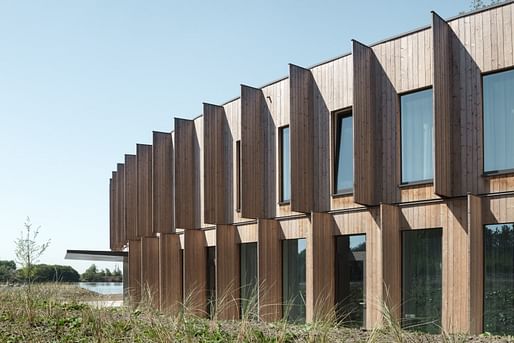

Lumber prices have seen their largest monthly drop on record, after a year of inflated prices driven by COVID-19 disruption. Throughout June alone, lumber prices declined more than 40%, driving an 18% overall decrease throughout 2021. The decline is attributed to a number of factors, including reductions in both speculative trading and DIY home building, and a gradual normalization of supply chains as economies re-open following over a year of reduced output.
According to material trade publication Fastmarkets Random Lengths, the “cash” price for lumber has fallen by $160, now averaging at $770 per thousand board feet. This represents a 49% decrease from an all-time high of $1,515 set on May 28th. As noted by Fortune, lumber prices nonetheless remain significantly above their pre-pandemic range of $350 to $500 per thousand board feet.

"The move up in lumber prices was quick and violent, and the fall we have seen has been equally dramatic," Steve Loebner, director of risk management at Sherwood Lumber, told Fortune. "I think we are getting close to a trading level being established, which will bring in buyers off the sidelines and firm up the market.” While lumber prices have declined at the source, it is expected to take several weeks for this change to be reflected in wholesale material suppliers and hardware stores.
While many building materials, including steel and glass, saw notable increases in price during COVID-19, the soaring cost of lumber became a prominent exemplar of the pandemic’s impact on construction. Throughout 2020 and 2021, the price of lumber rose to 300% above pre-pandemic levels, driven by supply chain disruption, an initial rapid sell-off of materials from manufacturers fearing a price collapse, and a surge in demand from Americans undertaking DIY projects during lockdowns.

In May, we detailed how increased lumber prices are one of several factors currently exacerbating America’s housing shortage, where inflated costs have added an average of $36,000 in expenses to each new development. The disruption to material supply chains caused by the COVID-19 pandemic may take between 18 months and two years to fully resolve, according to the 2021 Autodesk Construction Outlook.
The decline in timber prices is also enduring despite a looming threat of tariffs being placed on Canadian imports of softwood lumber. At the end of May, we reported the The U.S. Commerce Department conclusion that the United States must double its tariff on Canadian softwood lumber, raising the figure from 9% to 18%, in a dispute over Canadian state subsidies to the industry.
No Comments
Block this user
Are you sure you want to block this user and hide all related comments throughout the site?
Archinect
This is your first comment on Archinect. Your comment will be visible once approved.